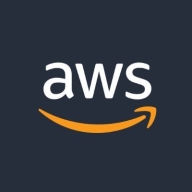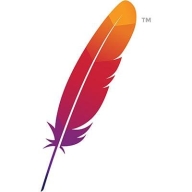

Apache Flink and Amazon Kinesis are competing products in real-time data stream processing. Apache Flink seems to have the upper hand in scalability and flexibility, while Amazon Kinesis excels in cloud integration and managed services.
Features: Apache Flink provides dynamic scaling, inbuilt checkpointing, and stateful transformations, making it suitable for complex data processing and analytics. Amazon Kinesis offers seamless AWS integration, real-time analytics, and an intuitive interface, facilitating ease of use and management within the AWS ecosystem.
Room for Improvement: Apache Flink requires a steep learning curve and high memory requirements, which can complicate deployment. There's also room for improvement in community support and documentation. In contrast, Amazon Kinesis could benefit from expanded non-AWS integrations, enhanced cost efficiency for large-scale operations, and more robust user interface options.
Ease of Deployment and Customer Service: Apache Flink requires more initial setup and management but is flexible enough to be deployed across various infrastructures. Amazon Kinesis simplifies deployment through managed services, reducing overhead and offering comprehensive AWS support to meet customer needs efficiently.
Pricing and ROI: Apache Flink is cost-effective as an open-source tool but demands more management resources. Amazon Kinesis, while involving higher subscription costs, offers potential high ROI due to integrated AWS services and reduced infrastructure needs, making it appealing for businesses deeply embedded in the AWS ecosystem.
| Product | Market Share (%) |
|---|---|
| Amazon Kinesis | 6.5% |
| Apache Flink | 14.4% |
| Other | 79.1% |


| Company Size | Count |
|---|---|
| Small Business | 8 |
| Midsize Enterprise | 10 |
| Large Enterprise | 9 |
| Company Size | Count |
|---|---|
| Small Business | 5 |
| Midsize Enterprise | 3 |
| Large Enterprise | 11 |
Amazon Kinesis makes it easy to collect, process, and analyze real-time, streaming data so you can get timely insights and react quickly to new information. Amazon Kinesis offers key capabilities to cost-effectively process streaming data at any scale, along with the flexibility to choose the tools that best suit the requirements of your application. With Amazon Kinesis, you can ingest real-time data such as video, audio, application logs, website clickstreams, and IoT telemetry data for machine learning, analytics, and other applications. Amazon Kinesis enables you to process and analyze data as it arrives and respond instantly instead of having to wait until all your data is collected before the processing can begin.
Apache Flink is an open-source batch and stream data processing engine. It can be used for batch, micro-batch, and real-time processing. Flink is a programming model that combines the benefits of batch processing and streaming analytics by providing a unified programming interface for both data sources, allowing users to write programs that seamlessly switch between the two modes. It can also be used for interactive queries.
Flink can be used as an alternative to MapReduce for executing iterative algorithms on large datasets in parallel. It was developed specifically for large to extremely large data sets that require complex iterative algorithms.
Flink is a fast and reliable framework developed in Java, Scala, and Python. It runs on the cluster that consists of data nodes and managers. It has a rich set of features that can be used out of the box in order to build sophisticated applications.
Flink has a robust API and is ready to be used with Hadoop, Cassandra, Hive, Impala, Kafka, MySQL/MariaDB, Neo4j, as well as any other NoSQL database.
Apache Flink Features
Apache Flink Benefits
Reviews from Real Users
Apache Flink stands out among its competitors for a number of reasons. Two major ones are its low latency and its user-friendly interface. PeerSpot users take note of the advantages of these features in their reviews:
The head of data and analytics at a computer software company notes, “The top feature of Apache Flink is its low latency for fast, real-time data. Another great feature is the real-time indicators and alerts which make a big difference when it comes to data processing and analysis.”
Ertugrul A., manager at a computer software company, writes, “It's usable and affordable. It is user-friendly and the reporting is good.”
We monitor all Streaming Analytics reviews to prevent fraudulent reviews and keep review quality high. We do not post reviews by company employees or direct competitors. We validate each review for authenticity via cross-reference with LinkedIn, and personal follow-up with the reviewer when necessary.